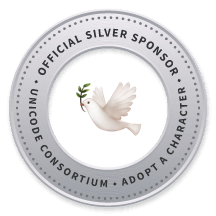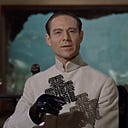In Memoriam: My Mentor
By Dr Ken Lunde, Janitor, Spirits of Christmas Past

Four years ago on this date, a great man of faith crossed the threshold from our world to the next. Professor Edward Daub, my mentor and youngest son’s namesake, passed away on Thursday, December 3, 2015 at the age of 91. My life unexpectedly took a new turn this year, so it seems appropriate to once again reflect on how I got on the path that led me to where I am today. After all, my mentor played a crucial role by encouraging the development of my current skill set.
After more than a full year as an undergraduate student at UW-Madison, I first met Professor Daub when I enrolled in his Technical Japanese 1 class in Fall of 1986. We used the Comprehending Technical Japanese (aka CTJ) textbook for that class, and also for the subsequent Technical Japanese 2 class in which I enrolled for the following semester. Not long after those classes ended, Professor Daub reached out to me, and asked whether I would be interested in working for him, to assist him and Professors Inoue (RIP) and Bird on their forthcoming Basic Technical Japanese (aka BTJ) textbook project. Professor Daub observed that I was able to discern subtle differences in the forms of kanji (Japanese ideographs), and I suspect that he felt that such a skill was useful for his project. The textbook was subsequently published in 1990. I managed to convince Professors Daub and Bird, along with UW Press, that I could typeset the textbook using the Japanese version of Aldus PageMaker, but that we would need to acquire an Apple LaserWriter II NTX-J printer in order to prepare the camera-ready copy for publishing. We ended up doing precisely that, and used Morisawa’s Ryumin (リュウミン) and Gothic BBB (ゴシックBBB) typefaces for the layout, which were resident on the printer’s hard disk. BTJ was the very first book that I typeset.

I am very fortunate that my work with Professor Daub substantially contributed to the funding of my graduate studies at UW-Madison, which happened to be in a completely different field: linguistics. (As an aside, one of the key benefits of my US Army Reserve enrollment in September of 1982—at the very beginning of my senior year in high school—almost completely funded both my BA (Bachelor of Arts) and MA (Master of Arts) degrees, which were also in the field of linguistics.) When my son, Edward Dharmaputra Lunde, was born in early 1990, Professor Daub served as a very appropriate namesake. I eventually left the Madison area in Summer of 1991 to start a career at Adobe, which came to an abrupt end this year.
When I returned to UW-Madison in May of 1994 to defend my dissertation, which was entitled Prescriptive Kanji Simplification, and to receive my PhD degree, I asked Professor Daub to accompany me when I accepted the degree. Given the extent to which he influenced my life and career, he was the most appropriate person to walk with me. It was one of the greatest honors of my life. I stayed in touch with Professor Daub over the subsequent years, and made a point of visiting him whenever my travels brought me back to Wisconsin, where I was born and raised. My father was the first to learn the news of his passing, which he conveyed to me on the actual day of his passing. I am also very grateful about that.
The memorial service for Professor Daub took place in Madison, Wisconsin on the afternoon of Saturday, January 16, 2016, and I made a point of being there in person, along with my son, Edward, who happens to live and work in the same city. Professor Daub’s wife of over 65 years, Elizabeth “Liba” Daub, passed away on July 24, 2016, so they are now together forever.
How I still miss you, my friend, my mentor, and my son’s namesake. My life was richer thanks to your guidance and trust, and I look forward to meeting you again on the other side many years from now. To everyone else: please join me once again in raising a glass in his memory and honor. 🍻 RIP.

About the Author
Dr Ken Lunde worked at Adobe for over twenty-eight years — from 1991-07-01 to 2019-10-18 — specializing in CJKV Type Development, meaning that he architected and developed fonts for East Asian typefaces, along with the standards and specifications on which they are based. He architected and developed the Adobe-branded “Source Han” (Source Han Sans, Source Han Serif, and Source Han Mono) and Google-branded “Noto CJK” (Noto Sans CJK and Noto Serif CJK) open source Pan-CJK typeface families that were released in 2014, 2017, and 2019, is the author of CJKV Information Processing Second Edition (O’Reilly Media, 2009), and published over 300 articles on Adobe’s now-static CJK Type Blog. Ken earned BA (1987), MA (1988), and PhD (1994) degrees in linguistics from The University of Wisconsin-Madison, served as Adobe’s representative to the Unicode Consortium since 2006, was Adobe’s primary representative from 2015 until 2019, serves as Unicode’s IVD (Ideographic Variation Database) Registrar, attends UTC and IRG meetings, participates in the Unicode Editorial Committee, became an individual Unicode Life Member in 2018, received the 2018 Unicode Bulldog Award, was a Unicode Technical Director from 2018 to 2020, became a Vice-Chair of the Emoji Subcommittee in 2019, published UTN #43 (Unihan Database Property “kStrange”) in 2020, and became the Chair of the CJK & Unihan Group in 2021. He and his wife, Hitomi, are proud owners of a His & Hers pair of acceleration-boosted 2018 LR AWD Tesla Model 3 EVs.
